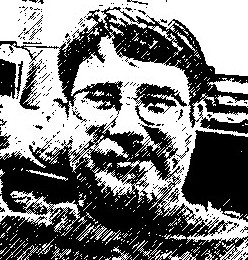I said I was going to show the installation on a Bachmann J class, but I got into a bind and didn't have the time to take any pictures. I also installed one in another ATSF 4-8-4, and the only thing different about it from the previous installations that I have already shown is the size of the decoder, which I will show later in this post.
I had one of the old type Bachmann J classes that I was trying to get running for a friend, and he was considering putting a decoder in it if I could get it to run decently. It had the dreaded split gears, and I had found some 3D printed gears, but the old chassis just doesn't run well. I told him that I could put a decoder in the old crappy B-Mann chassis J, but it would never be a great runner. I might possibly get it to be an adequate runner, but given the limitations of that chassis that was about as good as it was going to get.
However, there was a guy selling one for a really really good price, and I bought it. I told my friend that I would pass it on to him for the same price as I paid for it, and I could try to work with the old one but the new one is miles and miles superior to the old one and for the price he would be an idiot not to go that route instead. Of course he agreed with me.
It was supposed to have an ESU decoder, and it did, but when it got to me I found the tender top had a hole cut in it for the cube speaker and the speaker sounded like garbage. So, I ordered a new tender shell and some speakers of the correct round type for the loco and traded him that one for one that I had on hand that had a Tsunami 2 TSU-1100 installed in it.
This was a loco that I had picked up really cheap at a train show (cheaper than the "new" one that had just arrived, in fact) because it didn't run (a bit of Kapton tape on the chassis fixed it right up). I traded shells on the locos (my old one was 601 and the new one was 611, which is the one he wanted) and waited for my parts to come in.
When the tender shell and speakers arrived it was quick work to swap them out. Bachmann really hit it out of the park with the Spectrum J class locos built after 2005, and installing a sound decoder consists of removing the tender shell, removing the PC board just enough to slip the 15mm round speaker into the pocket made for it, reinstalling the PC board, and soldering the decoder in to the tabs built on the PC board for just that purpose.
Of course for this one I had to remove the old speaker and ECU decoder first, but once that was done and the old solder removed from the board the new installation went as expected. As I mentioned before, while I was at it I installed a Blunami BLU-1100 in the last of the three 4-8-4's I have, too, so now I have four 4-8-4 locos (three ATSF and one J class) equipped with Blunami decoders.
I do have a photo of the two decoders side-by-side to show their relative size. As you can see, the 1100 is about the same size as the TSU-1100 so if the TSU will fit the BLU will fit, too. As you can imagine, there is much more room in that 54 foot 4-8-4 tender for the speakers as well when using the 1100 rather than the 2200.
The best thing about having the Blunami decoders installed came about this past weekend when we had a train show. All of a sudden, about an hour before the show was to end, the wifi went wonky and the Engine Driver app that everyone uses on their cell phones stopped working. What that meant was, if you didn't have a Digitrax radio throttle you were done running trains. Unfortunately we were contracted, as it were, to run trains right up until closing time.I killed the Engine Driver app and pulled up the Blunami app and right away had a pair of trains running. A couple of our other guys had radio throttles, so all four of our NTrak layout tracks were occupied until the end of the show. The 1100 runs just as good as the 2200, sounds just as good, and fits a lot better into smaller spaces.
To say I am pleased with these decoders is an understatement. I have four of these 1100's, two of them have been installed and I plan to replace the two 2200 decoders in the 4-8-4's that have them with 1100's instead.
And then I will have a grand total of four steam 2200's... and I have four HO scale steam locomotives...
I also just purchased a BLU-2200 for EMD diesels, since I have an HO scale GP7.
It looks like my HO scale layout will be DC powered with no blocks. I'll probably use a dedicated 15VDC power supply for it rather than hook any sort of throttle up to it, so it won't even have a control panel, just an on-off switch. I will manually throw turnouts so I won't need power for them, either. That should make things really easy.
And now all I need to do is build some benchwork...









